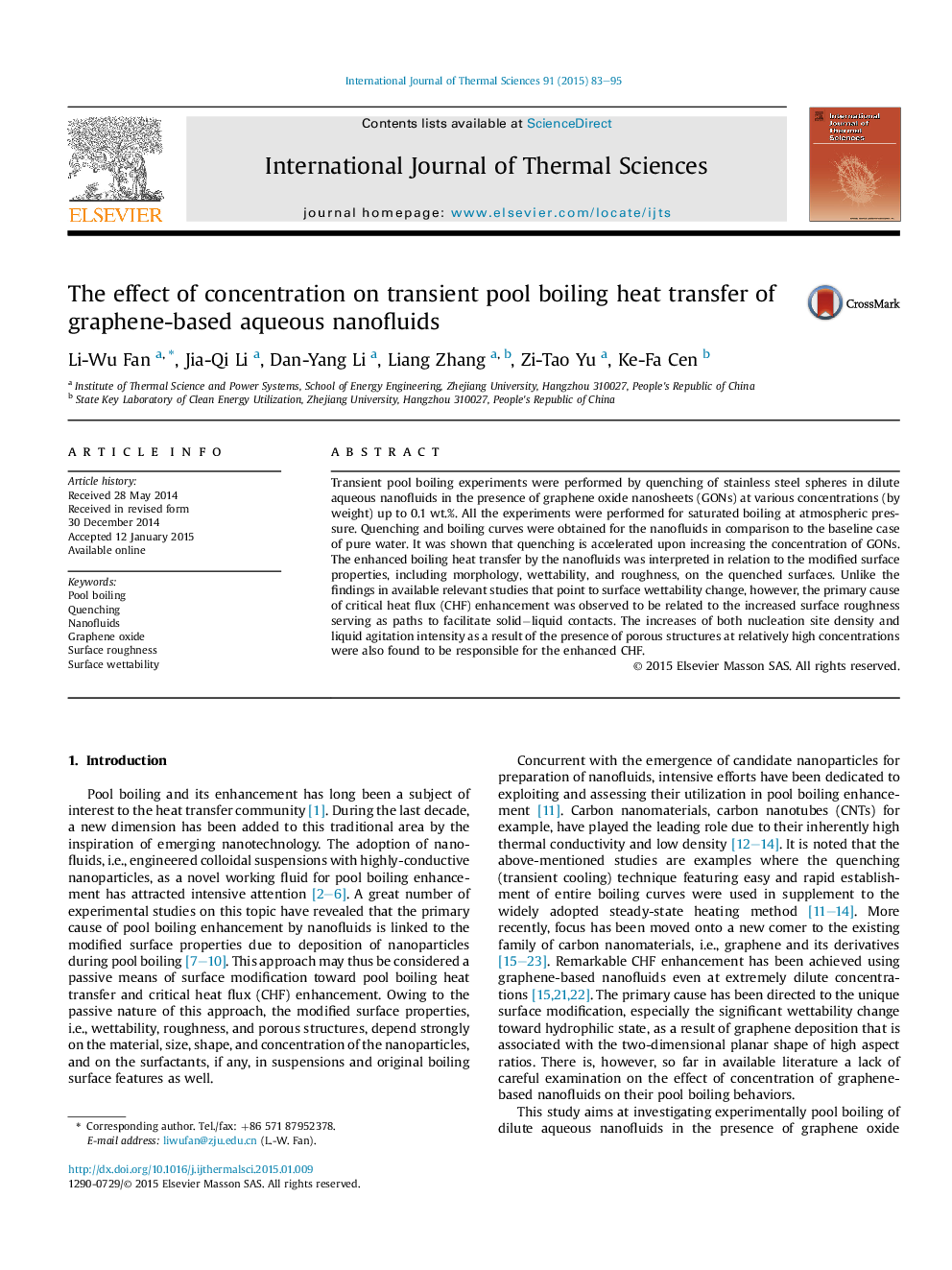| Article ID | Journal | Published Year | Pages | File Type |
|---|---|---|---|---|
| 7060964 | International Journal of Thermal Sciences | 2015 | 13 Pages |
Abstract
Transient pool boiling experiments were performed by quenching of stainless steel spheres in dilute aqueous nanofluids in the presence of graphene oxide nanosheets (GONs) at various concentrations (by weight) up to 0.1Â wt.%. All the experiments were performed for saturated boiling at atmospheric pressure. Quenching and boiling curves were obtained for the nanofluids in comparison to the baseline case of pure water. It was shown that quenching is accelerated upon increasing the concentration of GONs. The enhanced boiling heat transfer by the nanofluids was interpreted in relation to the modified surface properties, including morphology, wettability, and roughness, on the quenched surfaces. Unlike the findings in available relevant studies that point to surface wettability change, however, the primary cause of critical heat flux (CHF) enhancement was observed to be related to the increased surface roughness serving as paths to facilitate solidâliquid contacts. The increases of both nucleation site density and liquid agitation intensity as a result of the presence of porous structures at relatively high concentrations were also found to be responsible for the enhanced CHF.
Related Topics
Physical Sciences and Engineering
Chemical Engineering
Fluid Flow and Transfer Processes
Authors
Li-Wu Fan, Jia-Qi Li, Dan-Yang Li, Liang Zhang, Zi-Tao Yu, Ke-Fa Cen,
